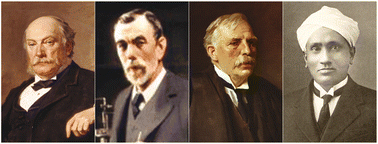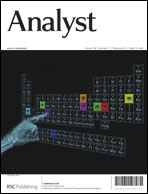Rayleigh, Ramsay, Rutherford and Raman – their connections with, and contributions to, the discovery of the Raman effect†
Abstract
The key contributions of the four great Nobel Laureates – Lord Rayleigh, Sir William Ramsay, Lord Rutherford and Sir Chandrasekhara Raman – to the understanding of light scattering, to the identification and classification of the rare gases, and to the discovery in 1928 of the Raman effect are outlined. The interactions between these scientists are explored, in particular those of Rayleigh with Ramsay (in establishing the physics and chemistry of the rare gases), Ramsay with Rutherford (on studies of the radioactivity of radium dibromide and on the discovery of radon and its position in the periodic table), and Rutherford with Raman (in supporting Raman's career via the Royal Society and as a nominee for the Nobel Prize). The resilience and dedication of these scientific pioneers is emphasised, noting in particular that Rutherford and Raman emerged with success from unlikely backgrounds and from countries far removed from the then centres of scientific excellence. Key developments from 1928 onwards in the light sources used for the excitation of Raman spectra and in the detectors of Raman scattered radiation are outlined. Attention is drawn to the mounting number of scientific areas which continue to be opened up by Raman microscopy and many other derived techniques such as SERS, TERS, etc.


 Please wait while we load your content...
Please wait while we load your content...